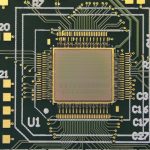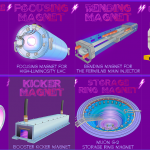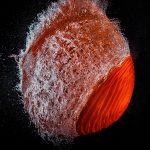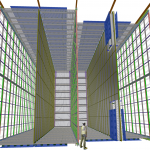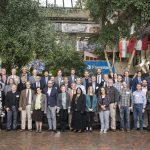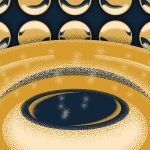When scientists begin taking data with the Deep Underground Neutrino Experiment in the mid-2020s, they’ll be able to peer 13.8 billion years into the past and address one of the biggest unanswered questions in physics: Why is there more matter than antimatter? To do this, they’ll send a beam of neutrinos on an 800-mile journey from Fermilab to Sanford Underground Research Facility in South Dakota. To detect neutrinos, researchers at several DOE national laboratories, including Fermilab, are developing integrated electronic circuitry that can operate in DUNE’s detectors — at temperatures around minus 200 degrees Celsius. They plan to submit their designs this summer.
detector technology
Missing March Madness? Let Fermilab fill a small part of the void created in these times of social distancing and shelter-in-place. Participate in Fermilab’s sendup of the NCAA tournament: March Magnets. Learn about eight different types of magnets used in particle physics, each with an example from a project or experiment in which Fermilab is a player. Then head over to the Fermilab Twitter feed on March 30 to participate in our March Magnets playoffs.
What if you want to capture an image of a process so fast that it looks blurry if the shutter is open for even a billionth of a second? This is the type of challenge scientists on experiments like CMS and ATLAS face as they study particle collisions at CERN’s Large Hadron Collider. An extremely fast new detector inside the CMS detector will allow physicists to get a sharper image of particle collisions.
From Cold Facts, Feb. 13, 2020: The Cryogenic Society of America picks up Fermilab’s story on the new SuperCDMS dilution refrigerator at SNOLAB near Sudbury, Ontario, Canada.
The publication of the Technical Design Report is a major milestone for the construction of the Deep Underground Neutrino Experiment, an international mega-science project hosted by Fermilab. It lays out in great detail the scientific goals as well as the technical components of the gigantic particle detectors of the experiment.
The USCMS collaboration has received approval from the Department of Energy to move forward with final planning for upgrades to the giant CMS particle detector at the Large Hadron Collider. The upgrades will enable it to take clearer, more precise images of particle events emerging from the upcoming High-Luminosity LHC, whose collision rate will get a 10-fold boost compared to the collider’s design value when it comes online in 2027.
From FAPESP, Dec. 20, 2019: Os físicos Ana Amélia Bergamini Machado e Ettore Segreto foram os ganhadores do DPF Instrumentation Early Career Award de 2019.
From UNICAMP, Dec. 19, 2019: Ana Amélia Machado e Ettore Segreto fazem parte da colaboração internacional Deep Underground Neutrino Experiment, sediada no Fermilab, e são responsáveis pelo detector de neutrinos chamado ARAPUCA., abreviação de Argon R&D Advanced Program Unicamp.
The American Physical Society Division of Particles and Fields has given its 2019 Early Career Instrumentation Award to two scientists on the international Deep Underground Neutrino Experiment, hosted by Fermilab. Ana Amelia Machado and Ettore Segreto, both of the University of Campinas in Brazil, are recognized for inventing and developing a photon sensor that is currently a baseline technology for the DUNE particle detector.

